The last couple years I’ve been marveling at the rich bird and native bee and other insect populations at our California native plant-heavy yard. I’ve promoted native plants for home landscapes for years, giving local talks and harping on their benefits to anyone who will listen. In that vein, locals! On October 23 I’m giving a “Let’s Talk Natives” talk at 10 am at Cherry Valley Nursery – email [email protected] to sign up. Or in January I’m talking to the Redlands horticulture group.
I recently read the book Attracting Native Pollinators put out by the insect guru group, Xerces Society. The book tells how to best protect our bees and butterflies and other pollinators. Why is this important? Put one way – About one in three mouthfuls of food and drink require a pollinator. Or, here’s another fact.
Close to 75% of the flowering plants on the earth rely to some degree on pollinators to set seed or fruit.
National Academy of Sciences
I’ve written quite a bit about habitat gardening – for example, this overview on Habitat Gardening (Part 1) – Insects are Good! and more info on butterflies/moths etc. For an in-depth look at bumblebees, click here . But I wanted to share some highlights from this important book.
Bees, including thousands of native bees species, are major pollinators

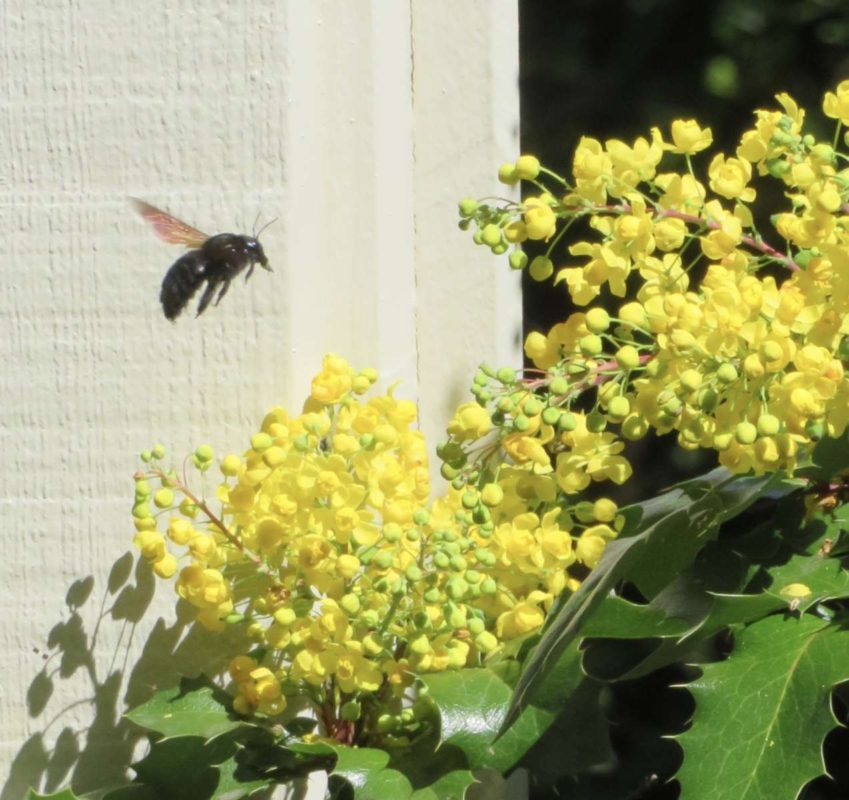
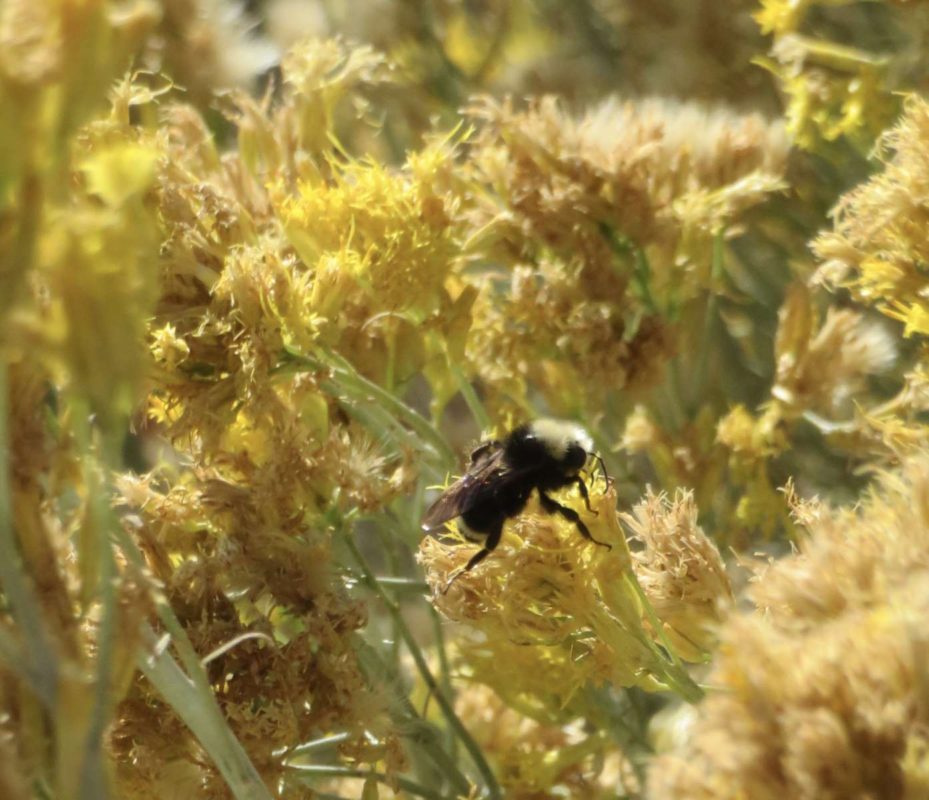
Most of us now know that the ubiquitous European honeybee is only one of many important pollinators. Other bees — including nearly 2000 native bees in California alone — join wasps, butterflies, moths, flies, and even some beetles as other pollinators. A few fly species also pollinate.
It’s important to know that all pollinators go through 4 stages- egg, larva, pupa to adult. This means their shelter and food requirement change during the stages. It’s not just flowering plants we need to provide for the adult stage of our pollinators.
I think these stages are fascinating to learn about. For example, we’ve had some of those huge green hornworm caterpillars (the larva stage), on our spent tomato plants. I don’t mind those because they turn into the beautiful sphinx moth (adult stage). Now we have so many native insects on our property, including those that predate caterpillars. I know at least one was oozing greenish fluid, so likely a tachnid fly laid eggs (egg stage) inside. Nature can be cruel but fascinating.
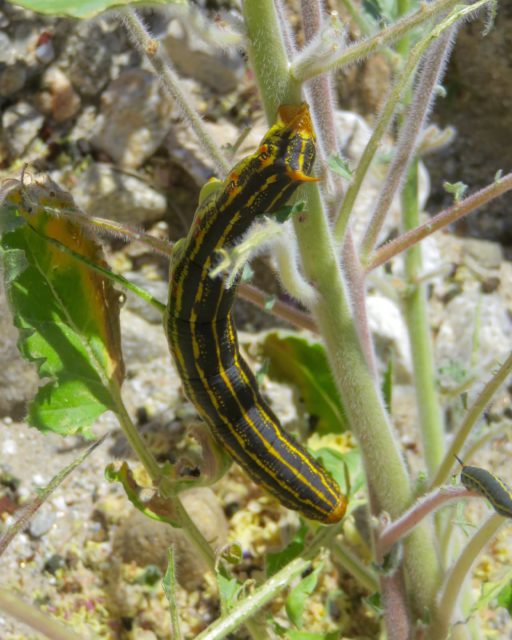
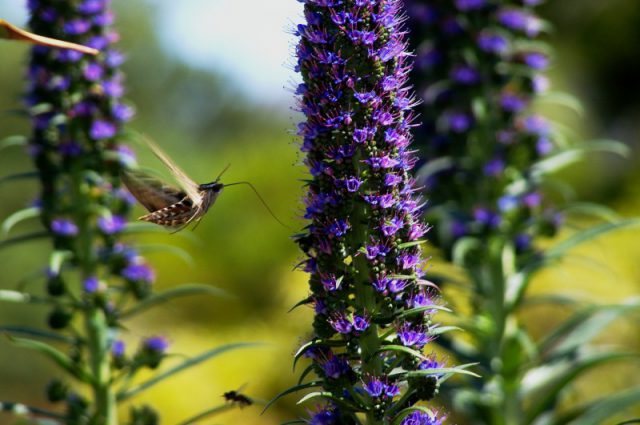
Bees are Best
Not surprisingly, bees are the best pollinators. Because they need the nectar for energy and the pollen to feed their brood, one female bee will visit 100s of flowers in one foraging trip. In doing so, they accidentally transfer pollen from flower to flower. And native bees — most of which are quite small so we don’t even notice them — actually pollinate more effectively and forage longer days than the European honeybee.
Some other facts I found interesting about bees from Attracting Native Pollinators:
- Most live 3-6 weeks as an active adult lifespan, while queens live one year.
- 90% are solitary bees, which means each provision their own nest. The rest are social bees, like the European bee or the bumblebee, which builds a group nest hidden on the ground, sometimes under logs.
- Most solitary bees nest in the ground, while 30% nest in abandoned burrows, snags or hollow branches.
- Did you know that 1/4th of bees are parasite bees like the cuckoo bee- they lays eggs in others’ nests!
- In general, bees that emerge in spring complete pupation by end of summer and overwinter as dormant adults.
Why Natives?
Native plants are four times more likely than introduced species to attract native bees. As for supporting butterflies and moths, natives support three times as many species. And native woody plants are even better – attracting 14 times as many species as introduced species.
For example, everyone knows of the butterfly bush for attracting butterflies. However, this plant from China is invasive and is only beneficial during the adult phase of the butterfly. Not a single caterpillar eats it, a vital need in the butterfly’s lifecycle. Whereas, buckwheats are likely hosts to 48 different butterflies and moths, while oaks are host to over 100. There are many more examples.
Taking action
Here are top ways to help our pollinators:
- Overlap bloom times. All flowers help, but native flowers adapted to local soils and climates are usually the best sources of nectar and pollen. Plant at least 3 different pollinator plants within the 3 blooming periods- spring summer fall (for warmer climes, we have winter too)
- Provide some unmulched bare ground somewhere on your property and also nesting materials like bare soil, standing snags, and shrubs with hollow stems- elderberry, blackberry, sumac, white sage are examples
- Don’t use pesticides! (pesticides kill indiscriminately and are highly toxic to bees and insects)
- Have sheltered and undisturbed places for hibernating and wintering – rotting logs, dead trees, tall grasses, overgrown weedy areas or brush piles
- Provide a habitat free of poisonous chemicals
- If you have grass, mow it higher. Or keep some unmowed and add some flowering plants like blue-eyed grass or poppies.
- Lastly, leave it alone– or at least some of your yard. Benign neglect is great for habitat gardens.
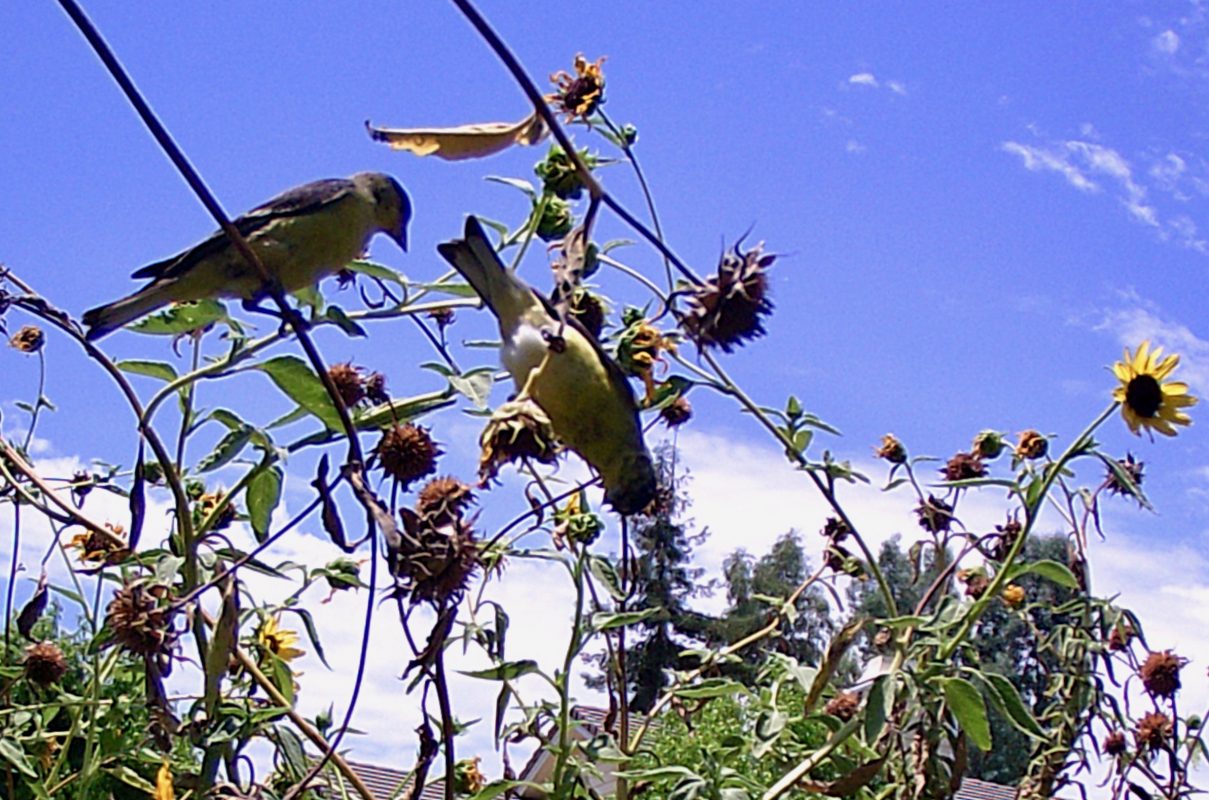

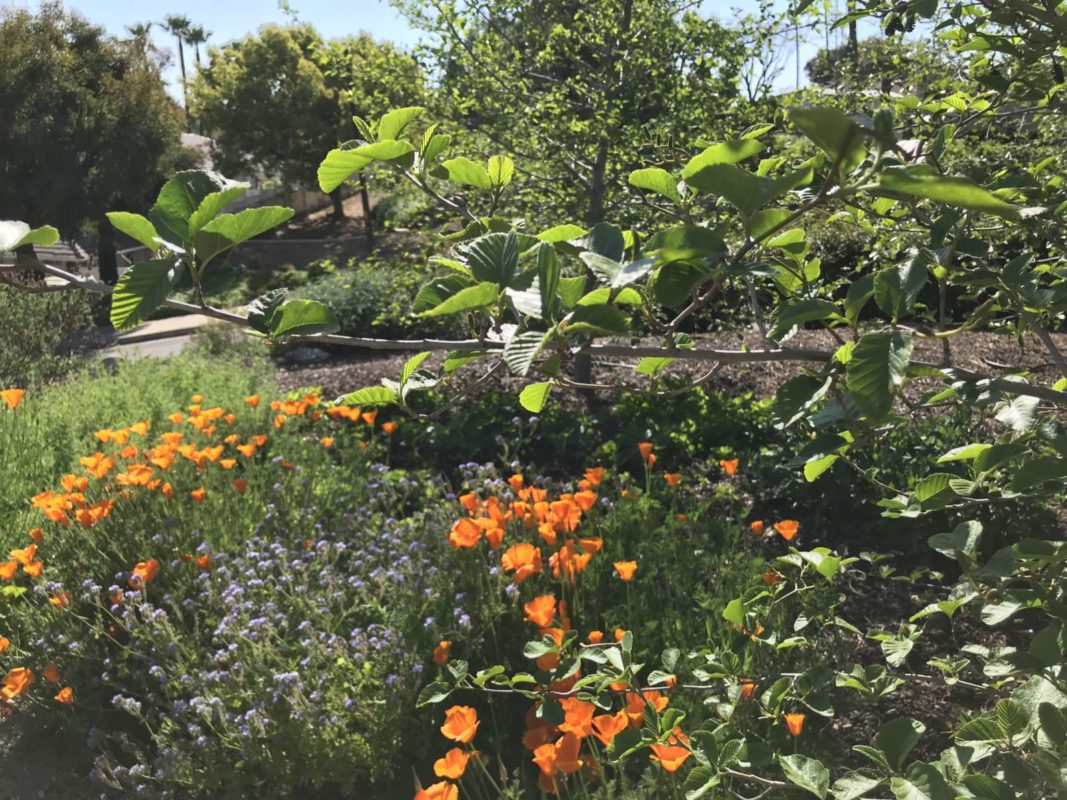
In summary — Pollinator populations benefit most from flower-rich, pesticide-free foraging areas, and suitable areas for egg laying and nesting.
Other pollinators/beneficial insects include:



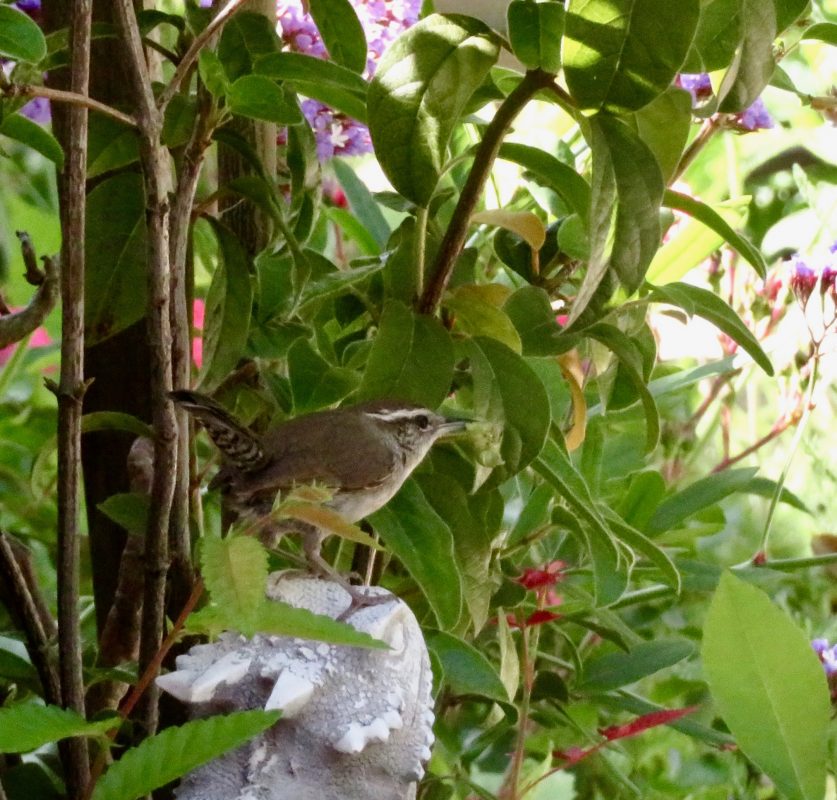
Butterflies and Moths
Butterflies and moths are not great contributors to pollination, but they do pollinate. In fact, Yucca and evening primrose are two plants that require moths for pollination. But more important, moths are an especially important food source for birds, which depend on their caterpillar stage as a food source when raising their young.
Moths are often overlooked. Butterflies are generally more colorful and fly during the day, while the drabber moths fly at nite.
The adult stage of both butterflies and moths are short-lived , living weeks with a few exceptions- monarchs and mourning cloaks live longer. Some overwinter and pupate in leaf litter and dense vegetation or rock piles (why it’s important to leave some of those in your yard).
Beetles, our first ancient insect pollinators
Beetles can pollinate, especially the long-horned beetles (named for their long antennae.)
Blister beetles are dependent on bees- their larvae attach to bee and go back to nest, where they eat the egg, pollen and nectar. They get their name because they release a chemical to repel predators, which can blister skin.
Flies and Wasps
Some flies and wasps are good pollinators. Flies frequently visit flowers, especially bee flies and flower flies, which are also good because their larva eat aphids. The tachnid fly is important for keeping caterpillars in check – their larva parasitize caterpillars. Unfortunately this also includes the caterpillars of our beautiful monarch butterflies, something I’ve increasingly witnessed in our yard. I sure wish I could tell them which to predate.
In Attracting Native Pollinators I learned that from an evolutionary standpoint, wasps came first, with bees being wasps that adopted a vegetarian diet. Because most wasps have small tongues, you’ll see them on shallow flowers with accessible nectar. Also, most are gentle, the hornet and yellowjackets giving wasps a bad reputation.
Telling the difference between flies and bees (and wasps). Many look similar. One big difference is flies have two wings while bees have four. Also the antennae on bees are longer than flies. Finally, female bees are hairy to carry pollen on its legs or belly – this might be the easiest way to tell if you see them on a flower. Wasps generally have a skinny waist and a longer abdomen.
We can make a difference
The biggest threats to our pollinators are habitat loss, pesticides (both agricultural and home), big agriculture that doesn’t have native plants around its margins, light pollution that especially kills moths, alien species, climate change, and diseases. But — and it’s a big but — we can do a lot of good for them in our yards.
For more info:
Guide to Western Bumblebees and Guide to Eastern Bumblebees
Books: Attracting Native Pollinators and The Bees in your Backyard
Xerces Society – wonderful website
On the menu at the top of the page, click on Wildlife and the category Bees, Butterflies and Other Insects – I’ve written a lot about beneficial insects – and also the category Plants – for favorite natives in California (and a couple articles on other regions)
Check the native plant society in your state or region. For example, the California Native Plant Society and Calscape provide great information on native plants in California where I live.
Happy Habitat gardening!
Leave a Reply